Mierle Laderman Ukeles’ Manifesto for Maintenance Art, 1969! is one of those things that has been part of my personal canon – the set of important works / concepts / ideas I find myself return to again and again – ever since I first came across it a few years ago in this talk by Jenny Odell.
Specifically, this phrase rings really true and important to me:
The sourball of every revolution: after the revolution, who’s going to pick up the garbage on Monday morning?
This interview is a great introduction to Maintenance Art:
The manifesto text (via this pdf):
M A N I F E S T O
FOR MAINTENANCE ART 1969!
Proposal for an exhibition "CARE"
MIERLE LADERMAN UKELES
______________________________________________________________
I. IDEAS
A. The Death Instinct and the Life Instinct:
The Death Instinct: separation; individuality; Avant-Garde
par excellence; to follow one’s own path to death—do your
own thing; dynamic change.
The Life Instinct: unification; the eternal return; the
perpetuation and MAINTENANCE of the species; survival
systems and operations; equilibrium.
B. Two basic systems: Development and Maintenance. The sourball
of every revolution: after the revolution, who’s going
to pick up the garbage on Monday morning?
Development: pure individual creation; the new; change;
progress; advance; excitement; flight or fleeing.
Maintenance: keep the dust off the pure individual
creation; preserve the new; sustain the change;
protect progress; defend and prolong the advance;
renew the excitement; repeat the flight;
show your work—show it again
keep the contemporaryartmuseum groovy
keep the home fires burning
Development systems are partial feedback systems with major
room for change.
Maintenance systems are direct feedback systems with little
room for alteration.
C. Maintenance is a drag; it takes all the fucking time (lit.)
The mind boggles and chafes at the boredom.
The culture confers lousy status on maintenance jobs =
minimum wages, housewives = no pay.
clean you desk, wash the dishes, clean the floor,
wash your clothes, wash your toes, change the baby’s
diaper, finish the report, correct the typos, mend the
fence, keep the customer happy, throw out the stinking
garbage, watch out don’t put things in your nose, what
shall I wear, I have no sox, pay your bills, don’t
litter, save string, wash your hair, change the sheets,
go to the store, I’m out of perfume, say it again—
he doesn’t understand, seal it again—it leaks, go to
work, this art is dusty, clear the table, call him again,
flush the toilet, stay young.
D. Art:
Everything I say is Art is Art. Everything I do is
Art is Art. "We have no Art, we try to do everything
well." (Balinese saying).
Avant-garde art, which claims utter development, is infected
by strains of maintenance ideas, maintenance activities,
and maintenance materials.
Conceptual & Process art, especially, claim pure development
and change, yet employ almost purely maintenance processes.
E. The exhibition of Maintenance Art, "CARE," would zero in
on pure maintenance, exhibit it as contemporary art, and
yield, by utter opposition, clarity of issues.
II. THE MAINTENANCE ART EXHIBITION: "CARE"
Three parts: Personal, General, and Earth Maintenance.
A. Part One: Personal
I am an artist. I am a woman. I am a wife.
I am a mother. (Random order).
I do a hell of a lot of washing, cleaning, cooking,
renewing, supporting, preserving, etc. Also,
(up to now separately I "do" Art.
Now, I will simply do these maintenance everyday things,
and flush them up to consciousness, exhibit them, as Art.
I will live in the museum and I customarily do at home with
my husband and my baby, for the duration of the exhibition.
(Right? or if you don’t want me around at night I would
come in every day) and do all these things as public Art
activities: I will sweep and wax the floors, dust everything,
wash the walls (i.e. "floor paintings, dust works, soap-
sculpture, wall-paintings") cook, invite people to eat,
make agglomerations and dispositions of all functional
refuse.
The exhibition area might look "empty" of art, but it will be
maintained in full public view.
MY WORKING WILL BE THE WORK
B. Part Two: General
Everyone does a hell of a lot of noodling maintenance work. The
general part of the exhibition would consist of interviews of two kinds.
1. Previous individual interviews, typed and exhibited.
Interviewees come from, say, 50 different classes and kinds
of occupations that run a gamut from maintenance "man,"
maid, sanitation "man," mail "man," union "man," construction
worker, librarian, grocerystore "man," nurse, doctor, teacher,
museum director, baseball player, sales"man," child, criminal,
bank president, mayor, moviestar, artist, etc., about:"
-what you think maintenance is;
-how you feel about spending whatever parts of your
life you spend on maintenance activities;
-what is the relationship between maintenance and
freedom;
-what is the relationship between maintenance and
life’s dreams.
2. Interview Room—for spectators at the Exhibition:
A room of desks and chairs where professional (?) interviewers
will interview the spectators at the exhibition along same questions
as typed interviews. The responses should be personal.
These interviews are taped and replayed throughout the exhibition
area.
C. Part Three: Earth Maintenance
Everyday, containers of the following kinds of refuse will be delivered
to the Museum:
-the contents of one sanitation truck;
-a container of polluted air;
-a container of polluted Hudson River;
-a container of ravaged land.
Once at the exhibition, each container will be serviced:
purified, de-polluted, rehabilitated, recycled, and conserved
by various technical (and / or pseudo-technical) procedures either
by myself or scientists.
These servicing procedures are repeated throughout the duration of the
exhibition.
From an interview in artnews:
And when people would meet me pushing my baby carriage, they didn’t have any questions to ask me. They didn’t say “How is it, to create life? How can you describe this amazing thing?” There really weren’t questions. It was like I was mute, there was no language. This is 1968, there was no valuing of ‘maintenance’ in Western Culture. The trajectory was: make something new, always move forward. Capitalism is like that. The people who were taking care and keeping the wheels of society turning were mute, and I didn’t like it!
….
I just wanted to be able to make these big, inflatable environments stuffed with air that I could fold up and put in my pocket when I was done. I did not want to have to take care of anything. But, there were all sorts of problems, and these things that were supposed to be symbols of freedom, they cracked.

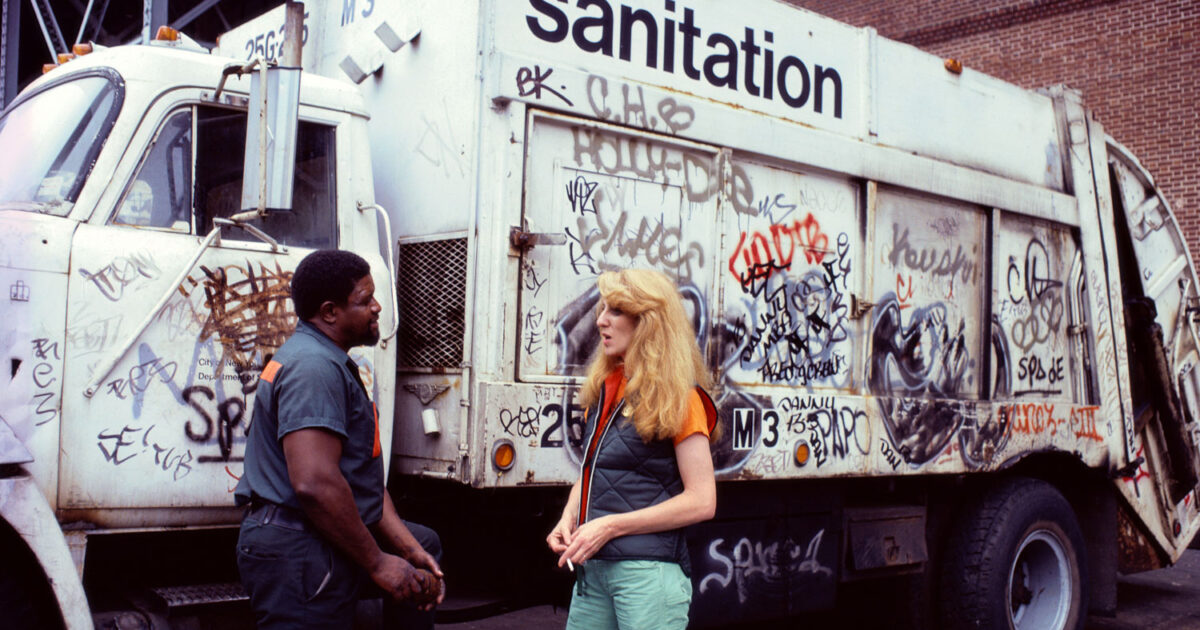
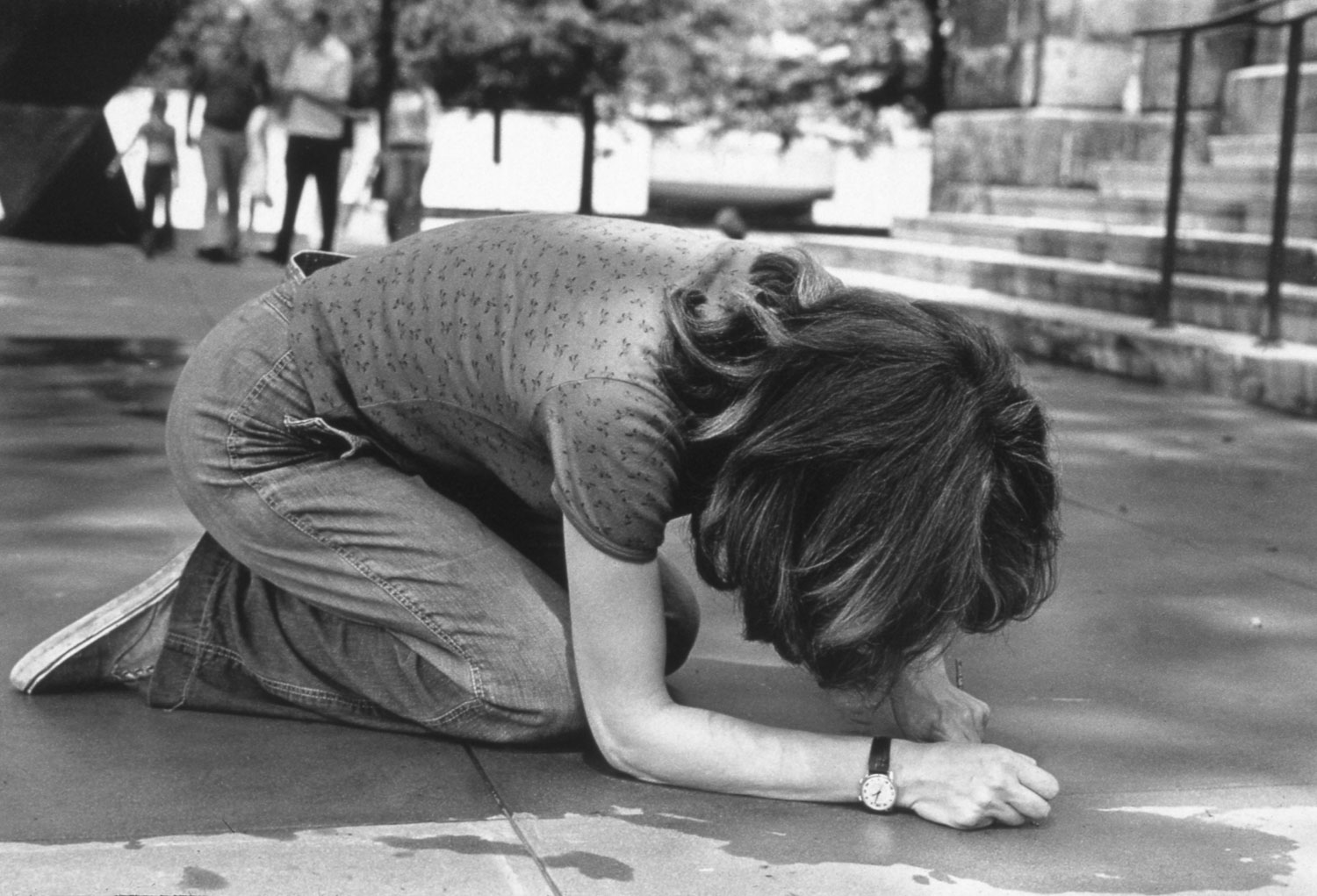
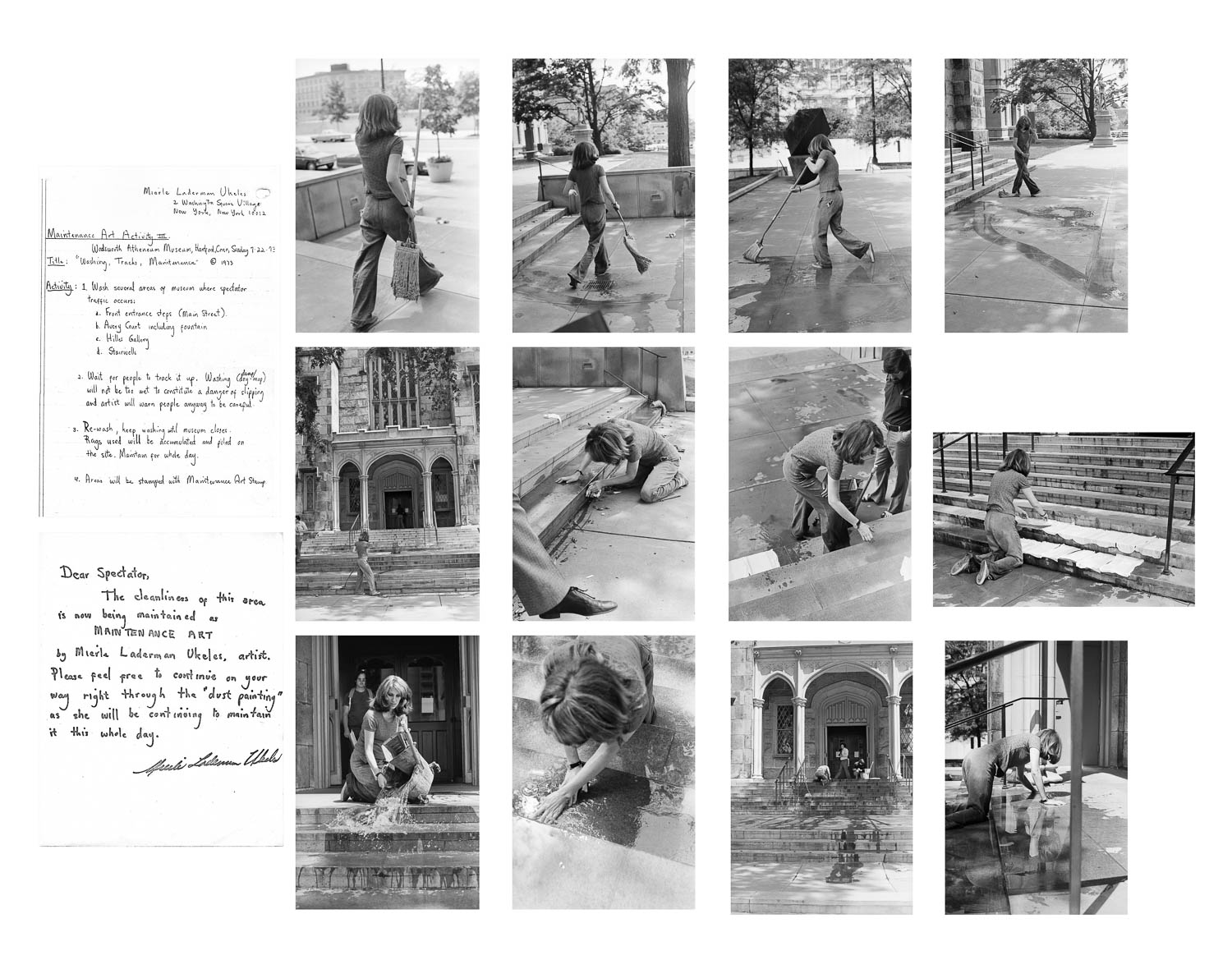
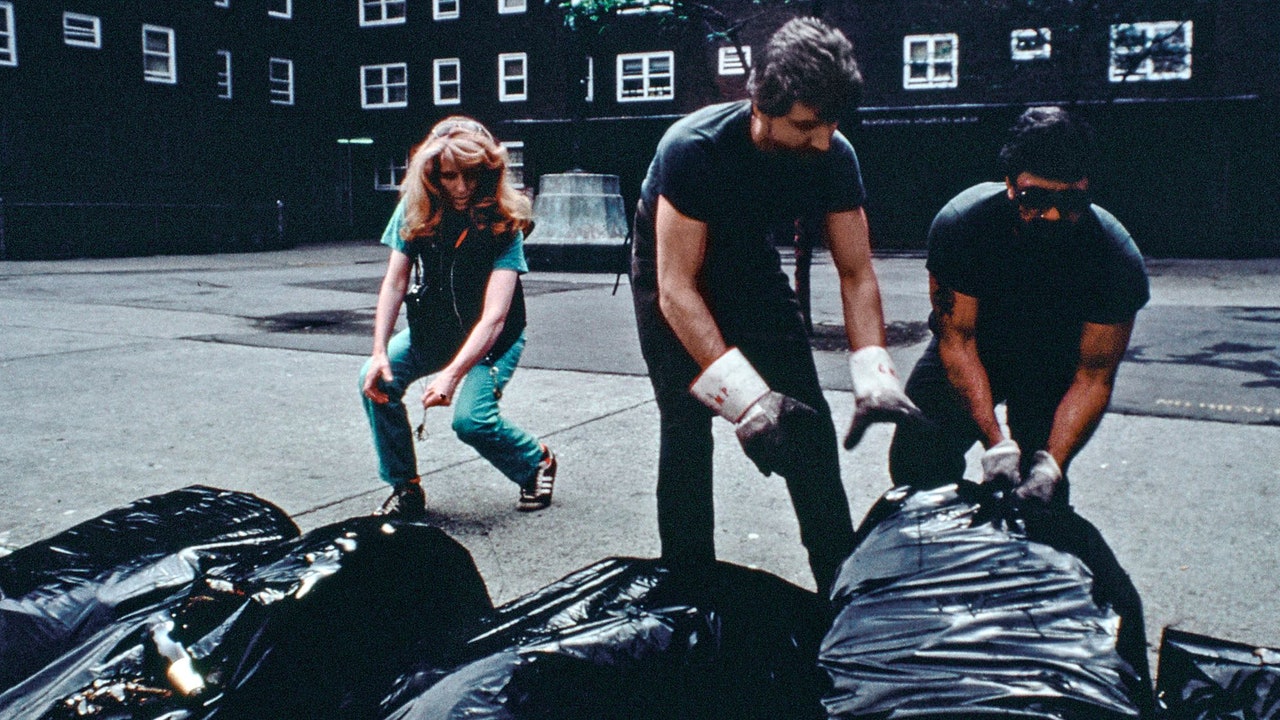
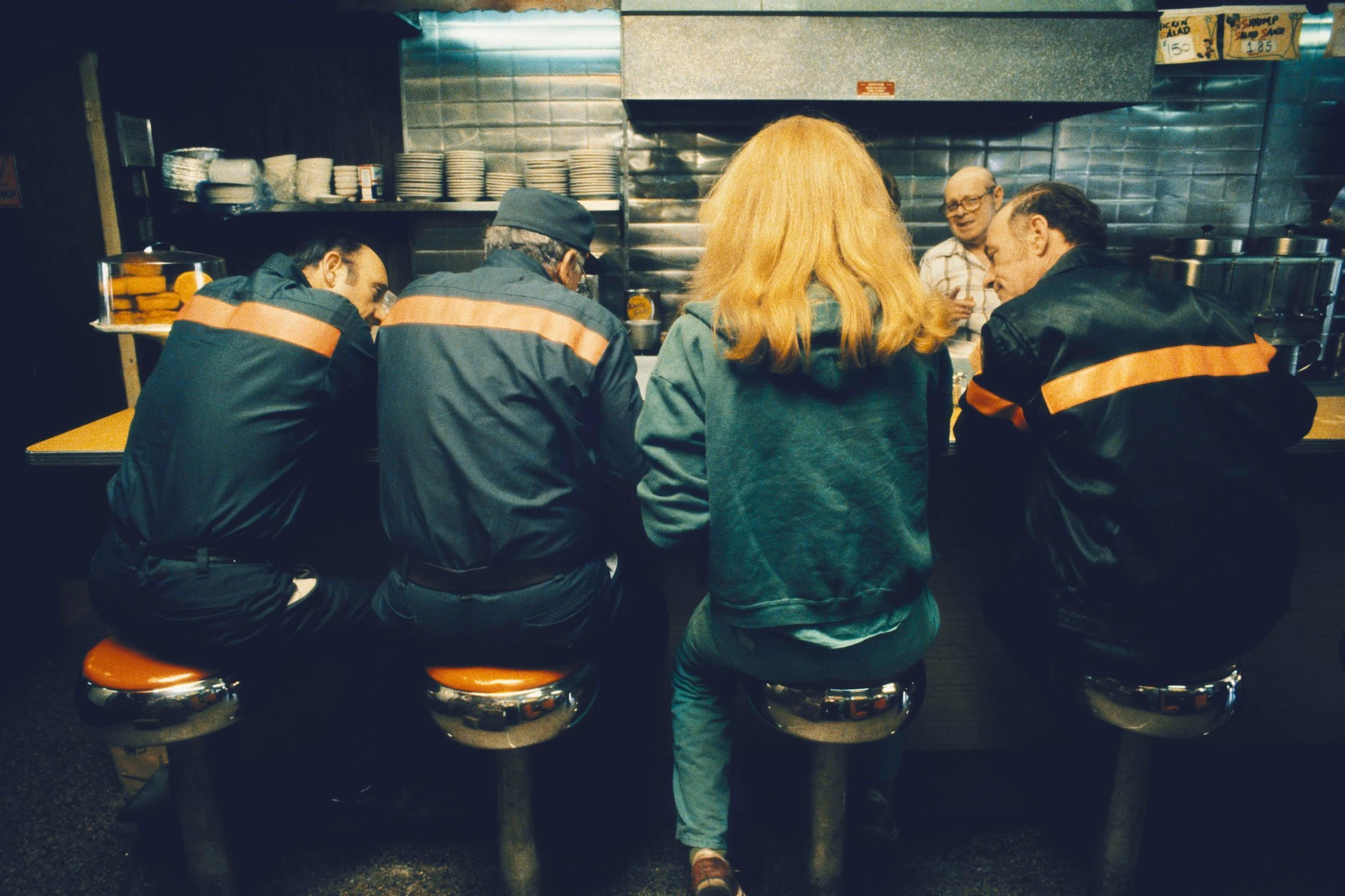
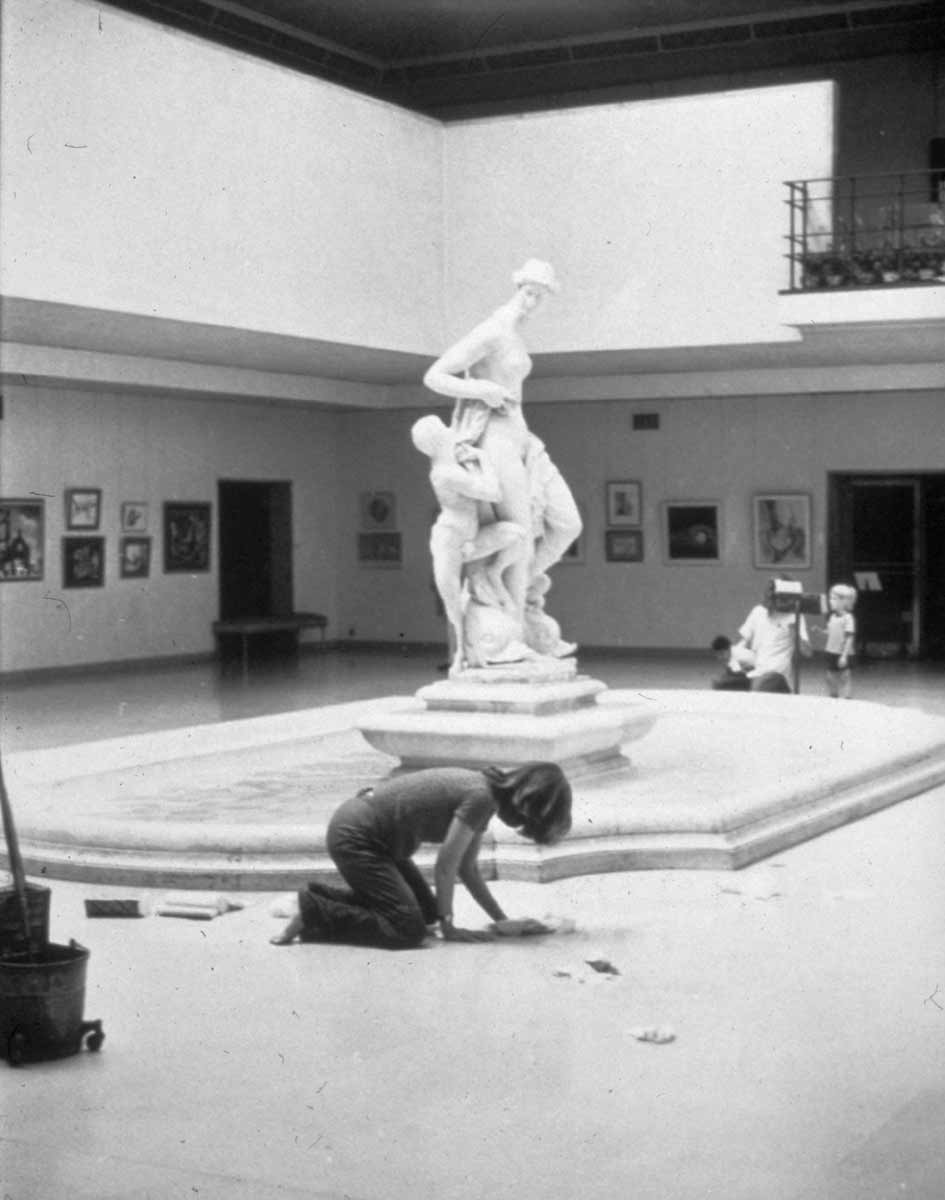
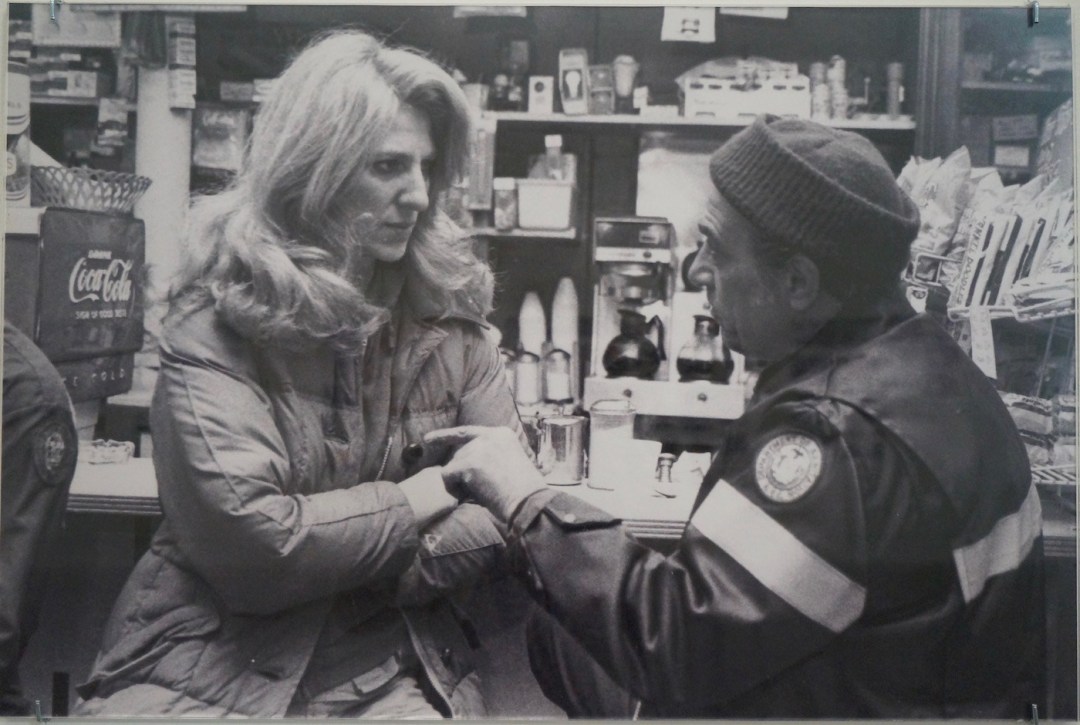
Refs
- Manifesto for Maintenance: A Conversation With Mierle Laderman Ukeles
- Mierle Laderman Ukeles talks about Maintenance Art
- Mierle Laderman Ukeles: A Human Being is the Whole World
- An Artist Who Calls the Sanitation Department Home
- Mierle Laderman Ukeles and the Art of Work
- Meet the artist who called out a museum by scrubbing the floor for hours
- How Mierle Laderman Ukeles Turned Maintenance Work into Art
- ronald feldman gallery